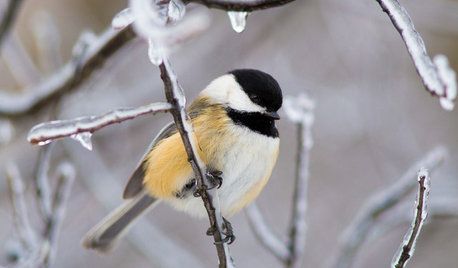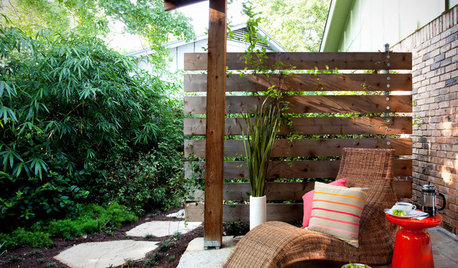Winter Harvesting
ughman
11 years ago
Related Stories

GREEN BUILDINGHow to Harvest Rainwater for Your Garden
Conserve a vital resource and save money by collecting stormwater for irrigation in a barrel or tank
Full Story
GARDENING AND LANDSCAPINGWorld of Design: 10 Home Gardeners Show Us Their Sweet Summer Harvests
From New York to Tokyo, these gardeners have turned their yards, terraces and rooftops into places of bounty
Full Story
GARDENING GUIDESGreat Design Plant: Kumquats for a Juiced-Up Winter
Grow it for the edible fruit or its good looks alone. This citrus cousin will brighten any gray winter day
Full Story
DECORATING GUIDESDecorating With Nature in Fall and Winter
Bringing the beauty of the changing seasons inside is easy and inexpensive. Here are 16 ideas to get you started
Full Story
DECORATING GUIDESTop Design Trends From the Winter 2015 Las Vegas Market
Interior designer Shannon Ggem is tracking finishes, motifs and design combinations at the 2015 show
Full Story
LIFEHard Winter? 9 Ways to Battle Cabin Fever
We know a lot of you are trapped where it just won’t stop snowing. Here are some ways to survive
Full Story
Hurricanes Turn Candles Into Elegant Fall and Winter Décor
Add height to a centerpiece or vignette with the glow and shine of these tall glass candleholders
Full Story
GARDENING FOR BIRDSBackyard Birds: Marvel at Chickadees This Winter
These North American natives flock to bird feeders and entertain with their complex birdcalls
Full Story
LANDSCAPE DESIGNThe Best Winter Garden Project? Plan for Next Year
Consider these 9 ideas now for a highly personal, truly enjoyable garden come spring
Full Story
WINTER GARDENINGExtend Your Growing Season With a Cold Frame in the Garden
If the sun's shining, it might be time to sow seeds under glass to transplant or harvest
Full Story





Shaul
equinoxequinox
Related Professionals
Middle Island Landscape Architects & Landscape Designers · Lakeland Landscape Contractors · Clearlake Landscape Contractors · Deerfield Beach Landscape Contractors · Madera Landscape Contractors · Manhattan Landscape Contractors · McLean Landscape Contractors · South Portland Landscape Contractors · Stallings Landscape Contractors · Tacoma Landscape Contractors · West Haverstraw Landscape Contractors · Jericho Stone, Pavers & Concrete · Barrington General Contractors · Homewood General Contractors · Shorewood General ContractorsughmanOriginal Author
equinoxequinox
Gerris2 (Joseph Delaware Zone 7a)